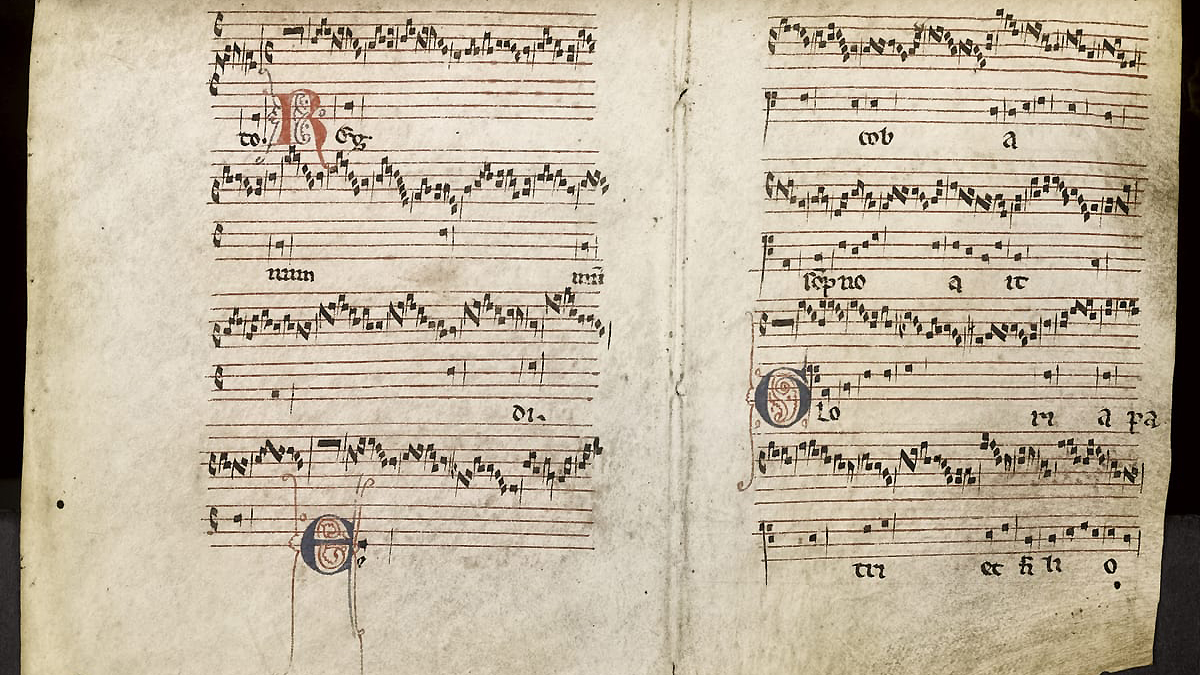13th-Century Music Manuscript Discovered in Prague
Deep inside the archives of the National Library in Prague’s Klementium, a 13th-century document has been discovered that’s exciting attention from musicologists. It contains fragments of six musical compositions for two voices and was bound inside a later manuscript. Jan Vojtíšek, the head of the Department of Manuscripts and Early Printed Books at the National Library in Prague, explains the manuscript and its background in a recent interview:
“The discovery was made by Dominique Gatté, our colleague from Strasbourg in France, who started to follow all of the new digitalised medieval manuscripts and their musical parts. He made this discovery thanks to his systematic work and let us know about it through our international cooperation on this topic. It was bound into a book from the 1430s, which is a copy of an earlier work written by Petrus de Crescentiis, it is about agronomic systems and how a man is supposed to manage his agricultural estate.”
Binding old parchment into new books was common practice, but as to how this musical text, perhaps from the Notre Dame School in Paris, came to be bound together in Prague with an agricultural manuscript from the fifteenth century, is still a mystery.
The finding is noteworthy for several reasons. Firstly, the community of artists and composers around Notre Dame in that period was the center of some of the most innovative musical achievements in Europe at that time. This new discovery is one of only four fragments of music conserved in Europe.
The text, within the fifteenth century Ruralia commoda manuscript, can be viewed online here.
It is also exciting musicologists for another reason, and that is to do with the musical history and culture of the Kingdom of Bohemia during the medieval era. While it is still uncertain how this manuscript made its way to Prague, it is a matter that can be further researched, allowing glimmers of insight into the history of the thirteenth and fourteenth-century music in the Kingdom of Bohemia.
The musical compositions in the texts are related to another fragment that is now in Firenze in Italy, which was made for Sainte-Chapelle [a royal chapel] in Paris in the mid-thirteenth century for King Louis IX of France. This means that while they are not new compositions, it’s this relationship which is important. It’s through this relationship that the practice of music production and reproduction can be studied, and it’s also further possible to track the slight changes in melody from manuscript to manuscript.
The so-called second life of the manuscript is very interesting to scholars – meaning, how it was used in the centuries after production, and how it came to be bound in with a fifteenth-century agricultural text in Prague in the first place.
Please Support us on Patreon!
 The minimum level of contribution is only $1 per month.
The minimum level of contribution is only $1 per month.
Moreover, starting with the pledge level of $3, you will get a digitized vintage book about bookbinding, book history, or book arts each month from us!
These pledges help iBookBinding to continue its work and bring more information about bookbinding and book arts to you!


